Each large organization has dozens, if not hundreds, of workflows that ensure its smooth operation.
Managing all these workflows is complex, but it doesn’t have to be difficult if you build the right processes and use the right tools.
In this article, we’ll discuss the ins and outs of enterprise workflow management and see how you can use automation to streamline your workflows and make sure they’re as efficient as possible.
What is enterprise workflow management?
Enterprise workflow management involves the systematic organizing, coordinating, and optimizing of business processes and tasks across an organization.
But before we dig into the nuts and bolts of EWM, let’s take a quick step back and talk about workflows.
A workflow is a sequence of actions that a person or a team performs to achieve a specific outcome.
Therefore, enterprise workflows enable organizations to achieve their goals.
They’re usually formally codified in the form of:
- Flowcharts
- Diagrams
- Checklists
- Standard operating procedures (SOPs)
Beyond the simplest workflows (that have no more than 3 or 4 steps), enterprises need dedicated tools and processes to manage their workflows in a scalable way.
And that’s what enterprise workflow management is all about.
Enterprise workflow management leverages software and possibly AI to redesign processes and manage workflows involving multiple teams and departments efficiently.
Workflow automation is key in reducing manual input and potential bottlenecks, in the same way that automated contract management enables companies to get approvals and sign deals faster.
What are the benefits of enterprise workflow management tools?
Workflow management software enables companies to:
- Free up time and resources by optimizing, simplifying, and automating processes and workflows
- Get rid of silos and bottlenecks to improve coordination and communication between teams and departments — and connect disparate workflows in a single system
- Scale workflows and make sure they stay efficient and relevant at any level
- Reduce costs and risks by eliminating wasteful processes and human errors
- Improve accountability by clearly defining roles and responsibilities
Tasks that used to take hours could take minutes with the right orchestration and automation systems in place.
Many enterprise workflow management solutions exist on the market, such as Clickup, Asana, Cflow, IBM Business Automation Workflow, Kissflow, and more.
PandaDoc, while not a traditional enterprise workflow solution, is nevertheless an excellent workflow automation tool that enables you to manage and simplify all your document and contract workflows.
How can you leverage automation to manage your enterprise workflows?
Building automated business processes and workflows can save your teams thousands of hours they’d otherwise spend executing each step, seeking approvals, and forwarding tasks and documents to other departments.
But to make full use of an automated workflow solution, you need to do it the right way.
Here’s how:
1. Analyze what can (and cannot) be automated
The top candidates for automation are repetitive tasks. Here are some sample use cases:
- Data entry
- Task assignment
- Email responses for common queries or routine communication
- Requests for approvals
- Document reviews
- Invoicing
- Skills assessments (i.e., testing the aptitude of potential new hires)
- Progress tracking and status updates
- Reporting and analytics
- Alerts and notifications
- Employee orientation and onboarding
- Inventory management
On the other hand, not everything can be automated — nor should it be.
Here are some examples of complex workflows where teams typically need more freedom to be successful:
- Creative processes
- Strategic decision-making
- Contract negotiations
- Complex problem-solving and innovation
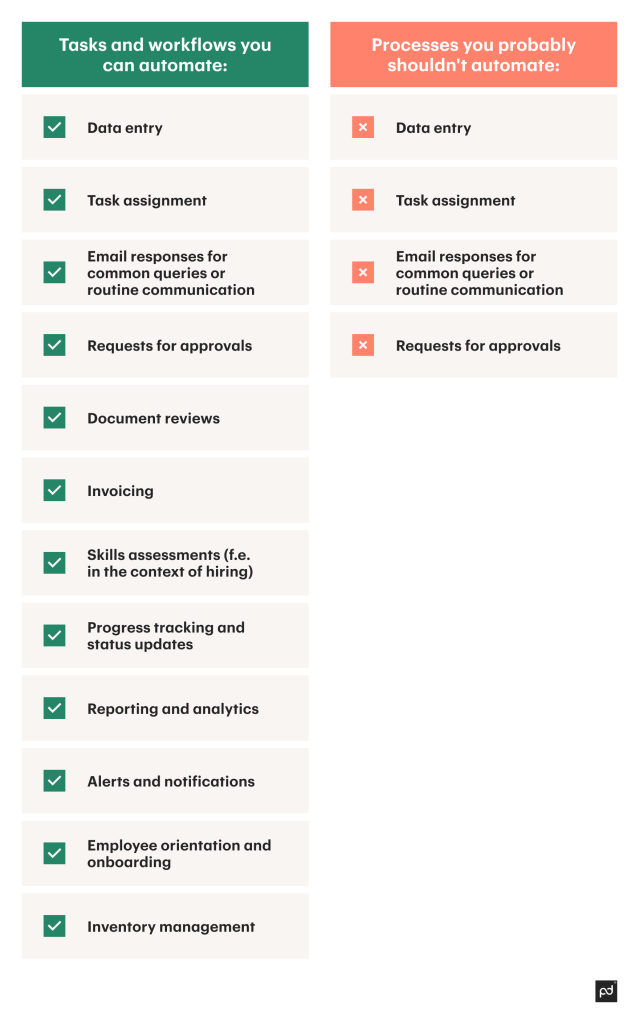
2. Set objectives and metrics
Define specific goals and metrics for your enterprise workflow management and automation efforts.
Doing so aims to:
- Eliminate errors
- Reduce the time necessary to complete a task or a workflow
- Enhance the customer experience
- Improve agility
- Address inefficiencies and redundancies
- Get approvals from stakeholders quickly and efficiently
Clear objectives will help you select the right workflow automation software.
3. Select the right automation tools
Research different tools and platforms to see which ones best fit your business requirements and needs.
Consider factors like exact use cases, ease of integration with existing systems and APIs, scalability, user-friendliness, role-based access controls, real-time collaboration, template availability, and cost.
In the next section, we’ll look into this in more detail to help you make the right choice.
4. Create a detailed implementation and onboarding plan
Develop a comprehensive roadmap for revamping your workflow management, including timelines, responsible parties and stakeholders, milestones, and results.
Make sure you include a testing and feedback phase.
5. Design and map automated workflows
Setting up your workflows is the most important phase and the one that’ll bring everything to completion.
Let’s take a look at how you could start setting up a workflow in PandaDoc.
1. First, you need to create a document or grab one of our hundreds of existing templates:
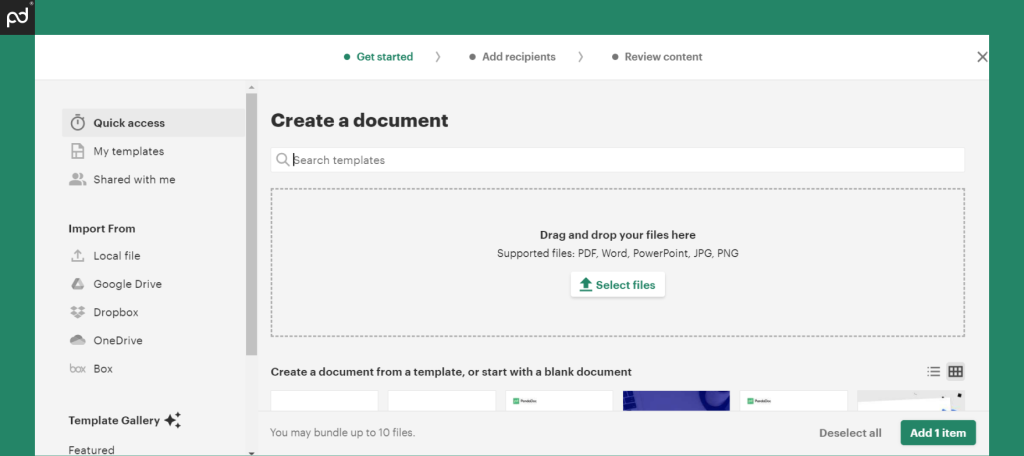
2. Then, after adding recipients, you can review and edit the content of the document and invite other team members to contribute to it via the Invite button.

3. You can add automations via the Automations button on the left-side menu.
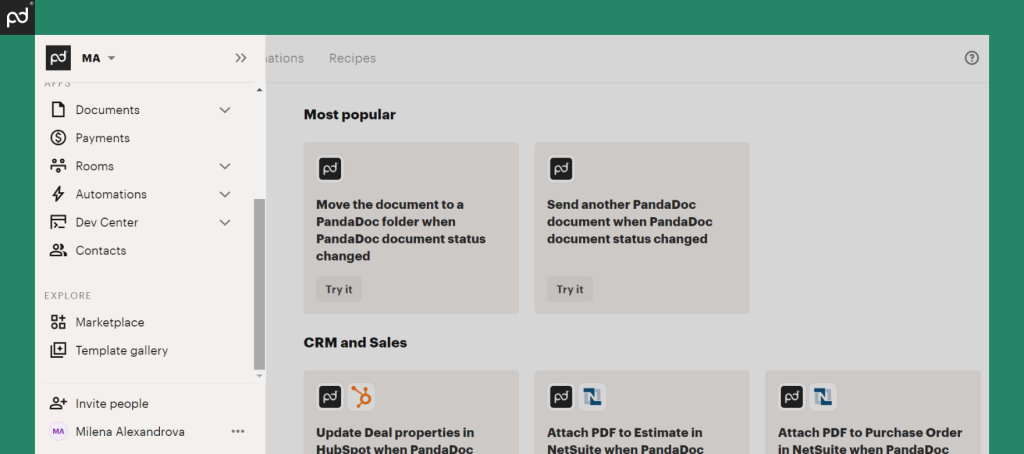
Our automations enable you to integrate different enterprise systems, such as CRM platforms, payment systems, productivity tools, and more.
4. You can invite coworkers or clients to collaborate together in a shared PandaDoc Room.
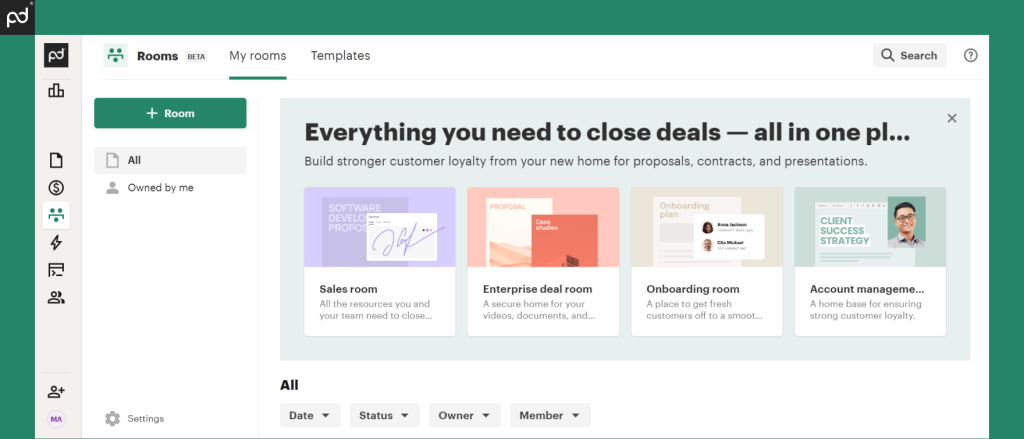
5. Notifications, analytics, and reporting features are also automated — whenever someone opens a document, signs it, or adds comments to it, the team working on the document is instantly notified.
How to pick the right enterprise workflow management system for your business
So, how do you actually choose the best software for the demands of your business?
Here, we’ll look at all the essentials you should consider when comparing platforms.
Once you define your business use cases and needs, you’ll have a solid list of features you require.
Here’s what we suggest looking into:
Automation capabilities
Look for software that can handle the specific tasks you want to automate.
This might mean opting for an industry-specific tool, an AI-powered platform, or a project management system that comes with a number of predefined use cases and automations.
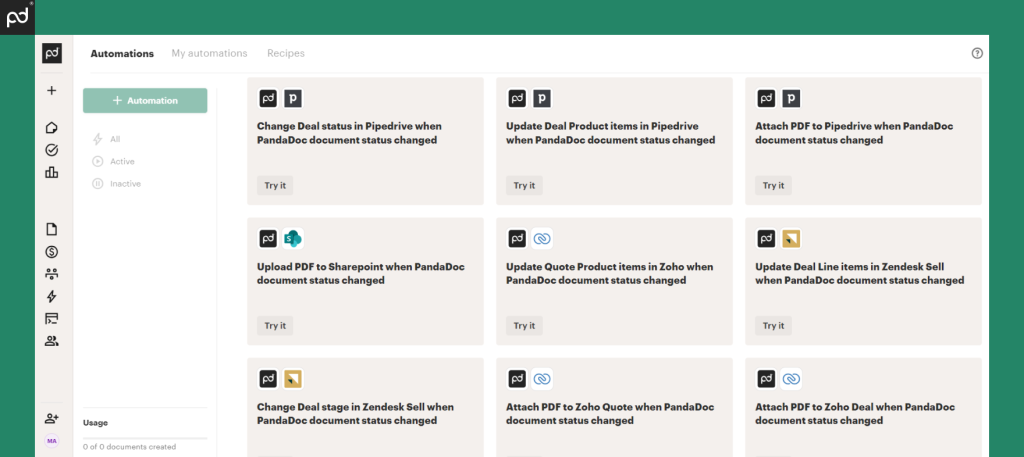
No-code vs. low-code options
The easiest way to get started is with a no-code platform with a drag-and-drop interface.
However, if your team has the technical know-how and needs more customization, a low-code platform might be a better choice.
Customization options and ease of use
Make sure the software lets you tweak and tailor workflows to fit your specific needs. Custom workflows are a must, especially as you grow.
In parallel to that, opt for a tool with a simple, intuitive user interface that won’t require months of training. (Yes, deep customization options and an intuitive user interface can absolutely coexist!)
Integration with other systems
Ensure the software can easily connect with your existing tools and applications.
PandaDoc offers dozens of integrations with CRM platforms you can use to automate your workflows, such as Salesforce, Pipedrive, Microsoft Dynamics CRM, Zoho, and more.
You can also connect your document management processes with other apps via Zapier or Integromat.
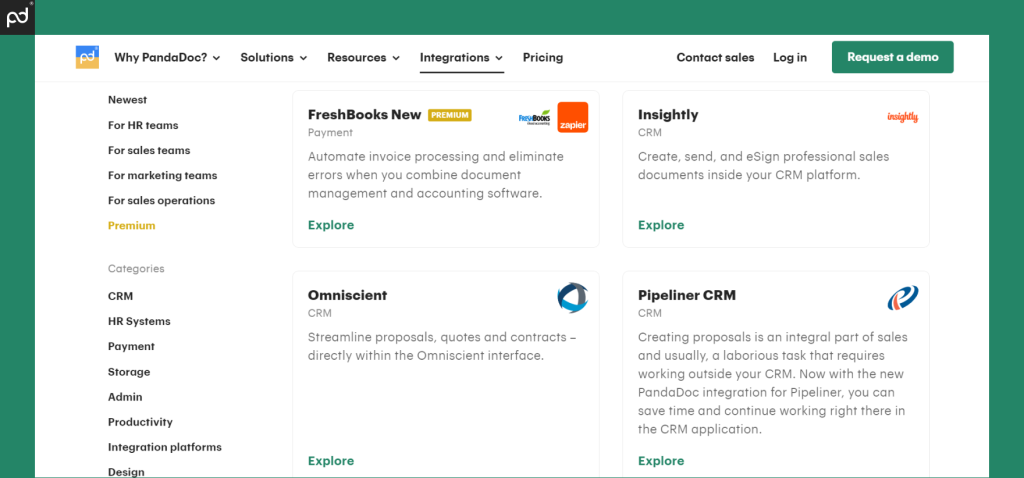
Scalability
Pick a solution that can grow with your business and can handle increasing workloads and new automation initiatives as you expand.
Real-time collaboration
The best platforms enable team members to work together simultaneously.
Analytics and reporting
Detailed reports and real-time analytics are essential for improving your enterprise workflows over time.
Security
Make sure the software has enterprise-grade encryption and user authentication to protect your sensitive data and comply with industry-specific data security regulations.
Pricing flexibility
The price tag is an important factor to consider, along with pricing options and flexibility.
Here are some questions to consider:
- Do the shortlisted tools offer per-user pricing, or do they come with unlimited users?
- Are there any discounts for annual subscriptions?
- Are the functionalities you need available on lower-tier plans?
- Can you easily switch between plans?
Support and user reviews
Look at user reviews on websites such as Capterra and G2 to see what others think about the tools you’re considering, and what their pet peeves are.
Enterprise workflow automation enables you to simplify processes, move faster, and be more agile
Enterprise workflow management software is an invaluable tool in your toolbox, if you want to streamline your processes and achieve operational excellence.
Pick a tool that not only meets your current needs but can adapt to future growth.
Some tools can support process automation for all departments, be it product, sales, marketing, business operations, or admin, while others are more specialized and niche.
Whichever option you select, make sure it integrates seamlessly with your current tech stack.
If you’re looking for ways to streamline your document and sales workflows, PandaDoc is your top choice.


